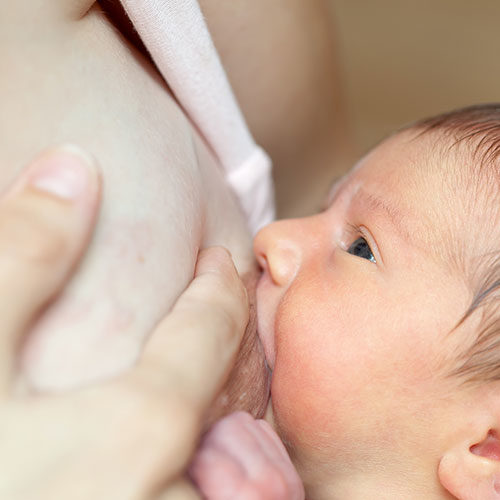What are Growth Spurts? What can I expect during these times?
Most babies go through phases when they nurse more frequently than usual and for longer duration. Sometimes they might nurse for hours together. Babies are also a little fussier during this time. Some people call it ‘frequency days’, some call it ‘wonder weeks’. It is more popularly referred to as – ‘Growth Spurts’.
Usually, a growth spurt lasts for 2 to 3 days. Sometimes, it may last for a week. As the baby nurses more frequently, it clearly indicates an increase in baby’s intake. In the early weeks, the baby’s intake increases at each growth spurt and remains at that increased level, increasing more at the time of the next spurt. This is because the baby’s appetite rises rapidly in the first month. This is why it is essential to keep nursing on demand for the mother to keep her supply up with the rising needs of her growing baby.
After the first month, the increase in intake during growth spurts is more or less temporary.
When the mother breastfeeds the baby on demand, no matter the frequency and/or the duration of nursing sessions, she can easily cope up with this temporary increase in the baby’s demand. Once the growth spurt is over, the baby usually goes back to her regular nursing cycle. However, the nursing patterns keep changing throughout, and the best way to meet the baby’s needs is to keep nursing on demand.
Why is it called ‘Growth Spurt’?
A theory suggests that babies grow in spurts. It means that there are particular days, around a particular age, when babies suddenly grow at a very fast rate as compared to any other day(s). Even though only a few small studies have been done to test this theory, it is widely accepted as it is reflected very distinctly in most babies’ nursing patterns. According to this theory, it’s not just physical growth that occurs during the growth spurts. Babies reach developmental milestones too after going through a spurt e.g. rolling over,sitting up, crawling, walking, talking etc.
When do Growth Spurts occur?
Growth spurts are most noticeable in the first year of the baby’s life. A tentative reference table is given below to understand when to expect a growth spurt. Please know that each baby is different and there’s no set rule to how a baby grows.
First year (age of the baby) | Second year (age of the baby) |
3-4 days | 12 months |
7-10 days | 15 months |
20-22 days (3 weeks) | 18 months |
45 days (6 weeks/1.5 months) | 24 months |
3 months |
|
4 months |
|
6 months |
|
9 months |
|
Many mothers have observed that their babies nurse like a newborn around their birthdays. This is specifically observed by women who have continued to nurse their babies for 3 years and more.
How to cope with a baby going through a growth spurt?
It can be difficult to cope with a fussy baby wanting to nurse seemingly all the time. Some do’s and don’ts might help parents deal with this situation better.
Do’s
- Nurse the baby on demand
- Nurse lying down to get some rest and sleep
- Take help of partner and/or other family members
- Have plenty of fluids and keep yourself hydrated
Don’ts
- Don’t look at the clock (Don’t limit the nursing frequency or duration)
- Don’t doubt your supply
- Don’t offer formula thinking baby is staying hungry even after nursing (when in doubt, check the pee/poop count)
- Don’t hesitate to eat to hunger as you may feel more hungry during spurts since you’re nursing more frequently
References:
Wish to speak with a member of our team who is a certified lactation professional and also an experienced breastfeeding mother, click on this link.
Medical Advice Disclaimer
THIS WEBSITE DOES NOT PROVIDE MEDICAL ADVICE.
The information, including but not limited to, text, graphics, images and other material contained on this website are for informational purposes only. No material on this site is intended to be a substitute for professional medical advice, diagnosis or treatment. Always seek the advice of your physician or other qualified health care provider with any questions you may have regarding a medical condition or treatment before undertaking a new health care regimen, and never disregard professional medical advice or delay in seeking it because of something you have read on this website.
Disclaimer
We understand and acknowledge that parents and babies can be of various genders on a spectrum of LGBTQI+. Families come in diverse flavours. However, in our articles, for the sake of simplicity and convenience, we will be referring to the breastfeeding parent as the mother and using the female pronouns- ‘she’ and ‘her’ for babies. Babies can be nourished and nurtured in different ways and while we have used the terms breastfeeding and nursing, we recognize that parents can opt to chest feed or finger feed.
We don’t have conflicts of interest and declare, and we are compliant with the WHO code of marketing of breastmilk substitutes and the IMS act.
In case you find any information on this website that needs to be updated, please write to us at info@bsim.org.in






